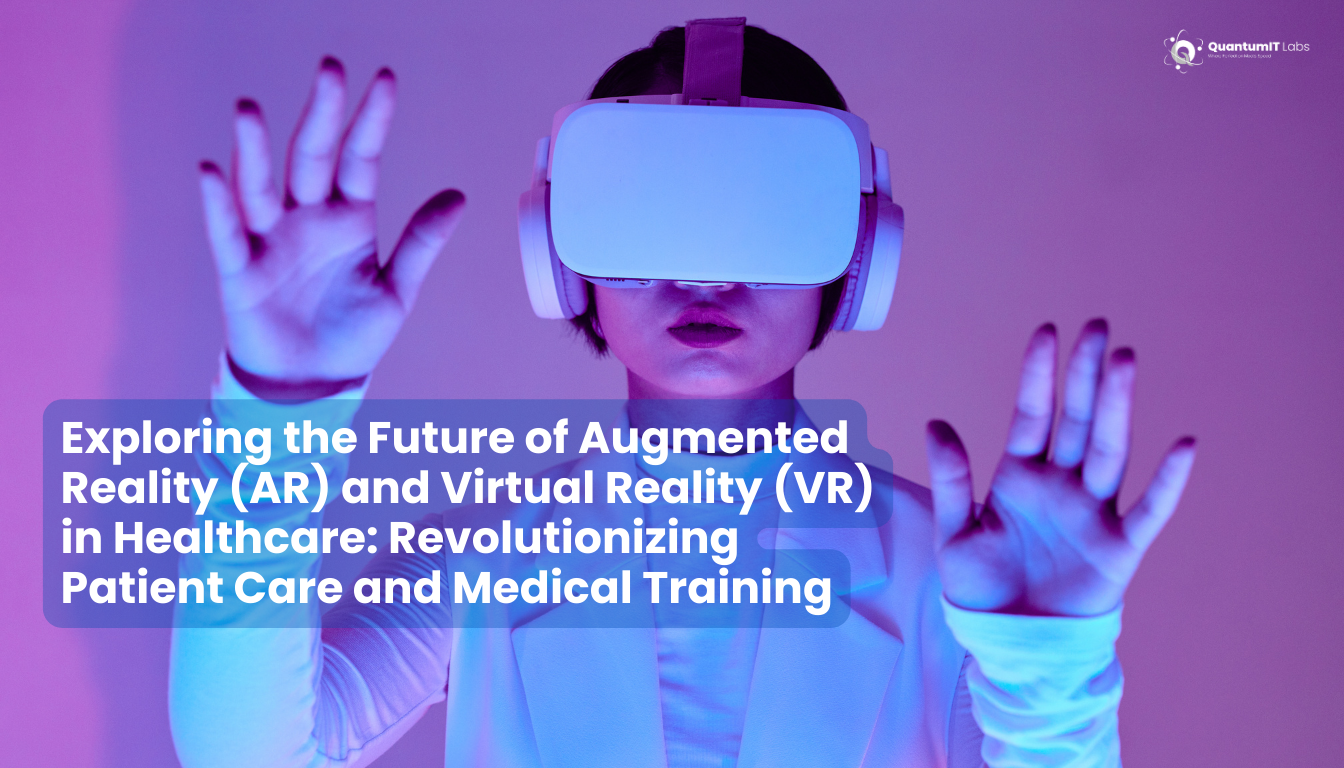In recent years, Augmented Reality (AR) and Virtual Reality (VR) have emerged as groundbreaking technologies, revolutionizing industries from gaming to education. However, their application in healthcare is where their potential truly shines. As technology continues to evolve, AR and VR are making substantial strides in improving patient care, medical training, and even the overall healthcare experience.
Transforming Patient Care with AR and VR
One of the most exciting prospects of AR and VR in healthcare is their ability to enhance patient care. These technologies are bridging the gap between the virtual and real worlds, allowing patients to experience advanced treatments and therapies that were previously unimaginable.
Pain Management and Therapy
VR has shown incredible promise in pain management. Patients undergoing long or painful medical treatments, such as chemotherapy, are being provided with VR headsets to distract them and immerse them in calming or engaging virtual environments. This helps reduce anxiety, stress, and even the perception of pain, making the treatment process more bearable.
Surgical Simulation and Precision
AR is changing the way surgeons operate. Surgeons can now overlay digital information onto the patient’s body using AR glasses, providing real-time guidance during complex surgeries. This enhances the precision of the procedure, reduces the risk of human error, and can lead to better patient outcomes. With AR, surgical teams can view 3D models of organs or tissues, ensuring that they make more informed decisions and perform better surgeries.
Patient Education and Empowerment
One of the biggest hurdles in healthcare is ensuring patients understand their conditions and treatment options. AR and VR can offer immersive educational experiences, allowing patients to visualize their diagnosis and the proposed treatments. This not only boosts patient comprehension but also empowers them to take an active role in their healthcare decisions.
Revolutionizing Medical Training and Education
Medical training is a rigorous and highly demanding field that requires precision, skill, and a deep understanding of complex human anatomy. AR and VR are bringing about a transformation in how medical professionals are trained, offering hands-on experience in a controlled and safe environment.
Virtual Reality for Medical Simulations
Medical students can now practice surgeries, diagnosis, and other medical procedures in VR environments. By simulating a real-world experience, students can develop their skills without the need for a real patient. VR is particularly useful for rare or high-risk procedures, allowing trainees to practice until they master the skills required. This reduces the risk of errors when dealing with live patients.
AR for Anatomy and Procedure Visualization
AR helps medical students and professionals visualize human anatomy in ways that traditional textbooks or 2D images cannot. With AR, learners can explore 3D models of organs, tissues, and bones, providing a deeper understanding of the human body. Additionally, AR can be used during live procedures to guide doctors in performing complex surgeries, offering real-time anatomical data overlaid on the patient’s body.
Remote Training and Collaboration
AR and VR are breaking down geographical barriers in medical training. Medical professionals from around the world can now connect virtually for remote training sessions, consultations, and workshops. This facilitates global collaboration, the exchange of knowledge, and continuous learning, which is essential for staying up-to-date in the fast-evolving medical field.
The Road Ahead: What’s Next for AR and VR in Healthcare?
The future of AR and VR in healthcare looks incredibly promising, with advancements happening at a rapid pace. As the technology becomes more refined and accessible, the potential applications continue to grow. We can expect AR and VR to play a central role in personalized medicine, where treatments and procedures will be tailored to individual patients using immersive technologies. Additionally, advancements in wearable AR devices could lead to continuous patient monitoring, providing real-time data to healthcare providers for better decision-making.
As more healthcare institutions adopt AR and VR technologies, the cost of these solutions will decrease, making them more widely available. In the near future, we could see AR and VR integrated into everyday healthcare experiences, offering a transformative impact on how care is delivered, managed, and perceived.
Final Call to Action: Empowering Healthcare with QuantumIT Labs
At QuantumIT Labs, we are at the forefront of technological innovation in healthcare. We specialize in integrating cutting-edge solutions like AR and VR into healthcare systems, enhancing patient care, medical training, and more. As the future of healthcare continues to evolve, QuantumIT Labs is committed to shaping the next generation of healthcare technology.
Contact us today to explore how QuantumIT Labs can help revolutionize your healthcare solutions with AR and VR!

